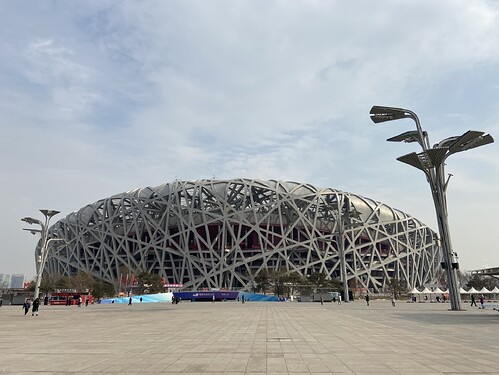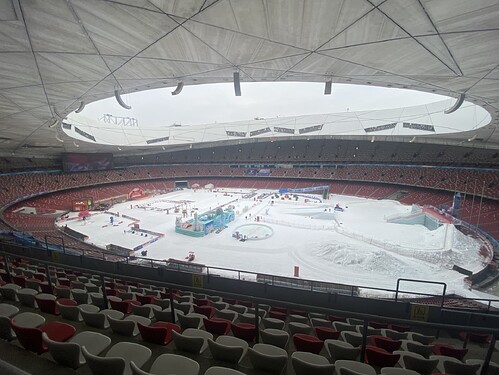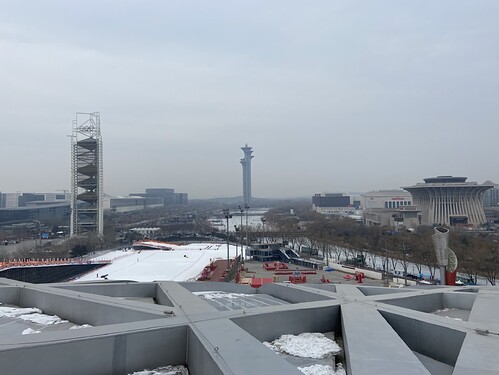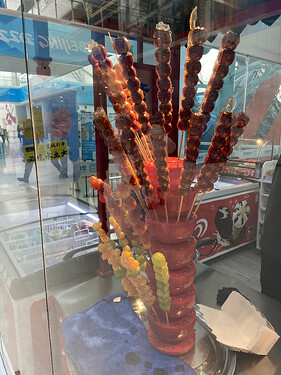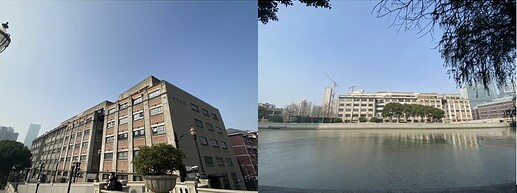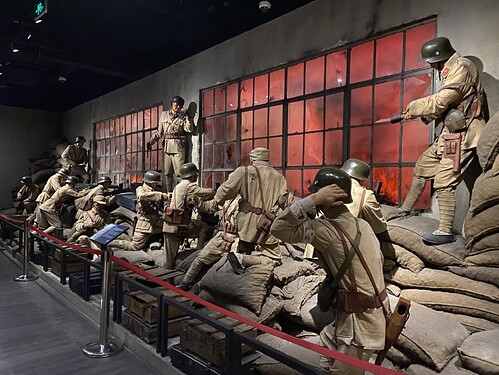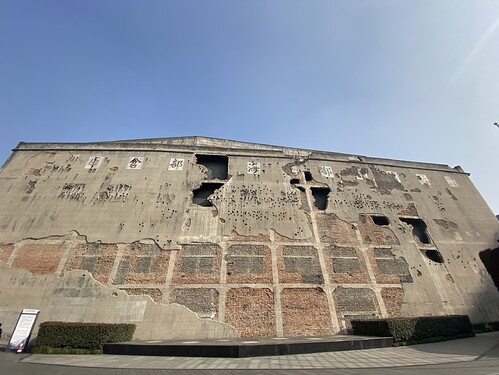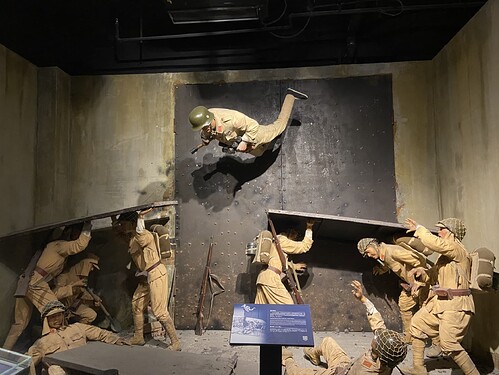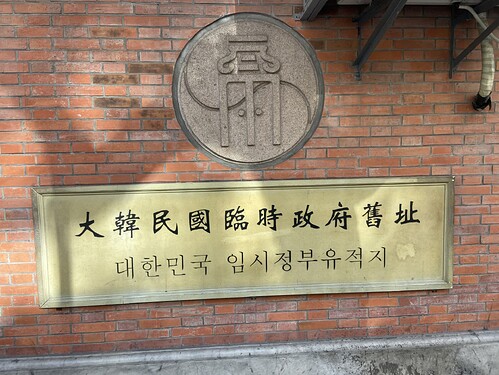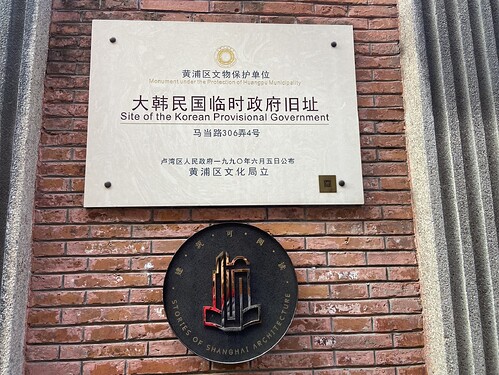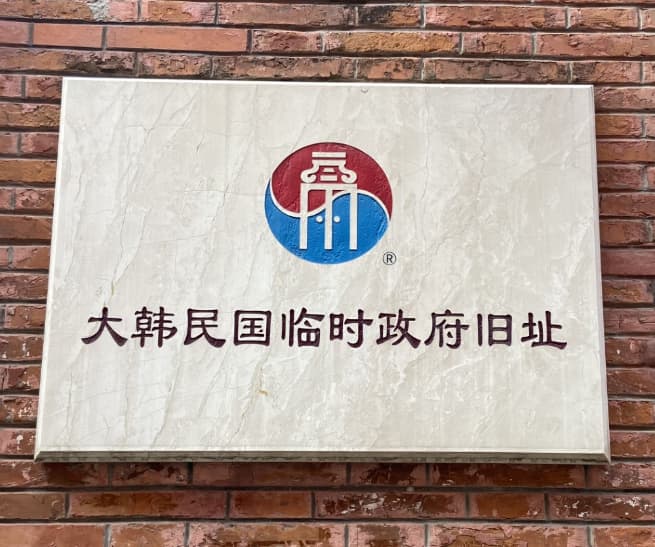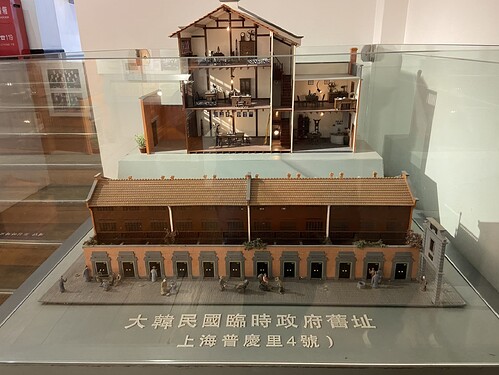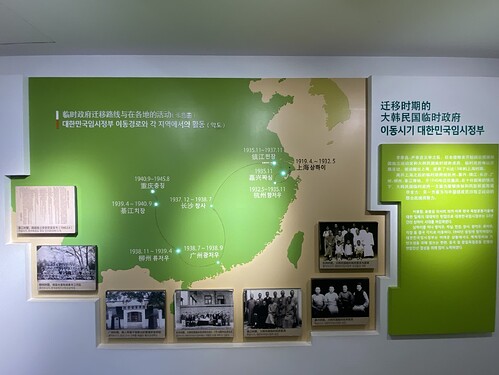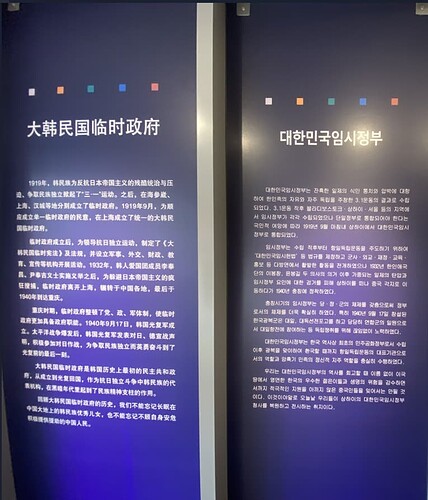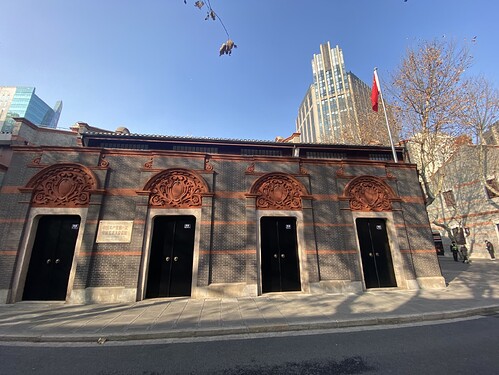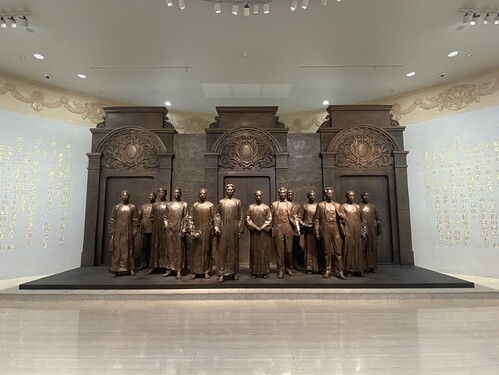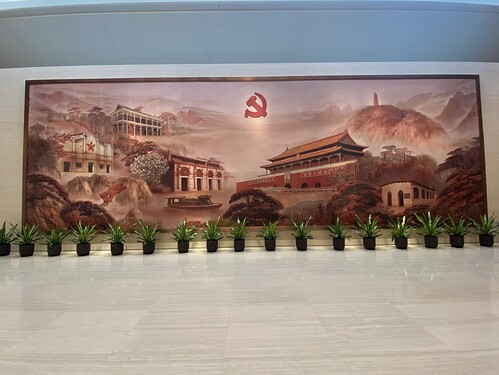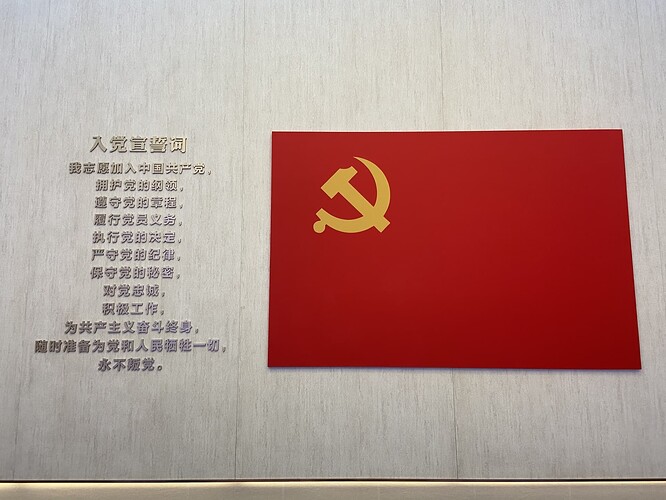I returned to Shanghai, BECAUSE I CAN. And you might remember that in my previous blog that this blog actually concludes my trip in Beijing as well, which you can read here: Being In Beijing (Travel... Blog? Part 4)
So here we go (Hopefully it’s not that long…):
Day 1 (Monday, New Years Day)
If you were alive before 2008, you may know that the Olympic games of that year took place in Beijing. And 2024 is the year of the Paris Olympic games, so what better way to start off than go to the site of the 2008 games? (I had a seizure writing that).
The site was split into two parts. First was The Water Cube, where all aquatic and indoor Winter Olympic games (from 2022) were held. Honestly it would have been a lot more beautiful at night but I didn’t stay that long, it looks ugly from the outside but inside is better. For the 2022 Winter Olympic games they called it the “Ice Cube”
The main part of the Olympic grounds was the glorious Bird’s Nest, I’m mostly sure that you will recognize it with its architecture.
Fun fact: The person who designed the Bird’s Nest was actually an Anti-Communist and was eventually arrested and disappeared.
For a price you could actually go inside where you could walk the exact same path that the President of China and the IOC (Thomas Bach) walked and see where the diplomats sat, you could also read about the stadium’s history and so forth. Here’s a view of the Stadium:
You were also granted access to the roof of the, where you could seem most of the area around the Stadium, as well as parts of Beijing.
I feel I described this day a bit vaguely, and I was genuinely surprised that there was almost no-one there for New Years Day (maybe they were catching up with family). But Beijing isn’t really the main topic so moving on.
Oh yeah one of Beijing’s signature deserts was this:
Basically, it was a skewer of fruit covered in something like syrup. I’m not too big of a fan. Too sour and sweet at the same time.
Day 2 (Tuesday)
I went for a stroll around a small park and took it easy. Packed my luggage and took a flight to Shanghai again. Nothing of significance.
Day 3 (Wednesday)
I gave myself a day to rest. So I mostly strolled around malls. Sometimes people need breaks even on vacation.
Day 4 (Thursday)
On this day I got HISTORICAL AND POLITICAL and went to three sites.
Site 1:
One of my favourite films that I have ever watched was a 2020 Chinese war film named “The 800”. If you haven’t watched it (you probably have never heard about it anyways), I strongly recommend it (It’s got English subtitles in the movie). And it’s based on a true story. Usually I don’t like Chinese war movies because they either are too poorly written, heavily glorifies war, or only focuses on Communist victories. But this one was different.
During the Battle of Shanghai of the Second Sino-Japanese war, a group of 800 soldiers of the 88th Division of the National Revolutionary Army (NOT COMMUNISTS), found themselves under siege by the Japanese forces whilst stationed in a warehouse (Author’s edit: There wasn’t actually 800 soldiers, the real number was actually around 400 to 500. The inflated number was used for psychological warfare to scare the Japanese and boost Chinese morale) . This warehouse was called Sihang Warehouse.
Despite their numbers, these 800 soldiers of the 88th Division fought against the Japanese fiercely. And they fought well, lasting for a four-day siege constantly under heavy fire before retreating across a bridge after being ordered to relocate somewhere else. The group of soldiers were lead by Colonel Xie Jinyuan (谢晋元, the road next to the warehouse was named after him in honour). A heroic leader that somehow manage to boost morale among the soldiers. He also got them to write wills in times of peace.
Here’s an image of a replica of a group of soldiers fighting near the windows.
Some prior information about the 88th Division:
China back then, was weak, with a barely proper military. So in attempt to modernize and restructure the military, Chiang Kai-Shek (Leader of Nationalist China), would seek help from the Weimar Republic. Thus, Germany would supply China with German equipment, and sent advisors to train the soldiers.
Ultimately, attempts of reform with German assistance for the NRA was unsuccessful, and only 7 divisions successfully emerged. These were the 3rd, 6th, 9th, 14th, 36th, 87th and 88th division (which was why the Chinese soldiers in the image above had German equipment).
And after a certain Austrian Painter and his Nationalsozialistische Deutsche Arbeiterpartei rose to power, support for China gradually stopped in favour of Japan. (Nevertheless, danke Germany, for trying to support a struggling China)
Whilst most of the warehouse was repaired into commercial hubs, the Western part of the Warehouse had only repaired the interior, transforming it into what is now called the “Sihang Warehouse Battle Memorial”. The museum showcased the determination of 800 soldiers under the command of a heroic Colonel, fighting for their survival in the four day siege in what is now known as The Defence of Sihang Warehouse. The exterior of the Western wall was not repaired to showcase history, as it faced the most fighting. Also it’s free.
An image of a model of Chen Shusheng (陈树生) strapped with explosives leaping onto Japanese forces, who heroically sacrificed himself to prevent the Japanese from blowing up the Western Wall. He would be the first of many to sacrifice themselves.
Site 2:
As most of you should know, Korea was officially incorporated into the Empire of Japan on the 22nd of August, 1910. Understandably, the Koreans weren’t too happy about losing their sovereignty and a large group of Korean exiles would meet in Shanghai to form the Korean Provisional Government. This Provisional Government aimed to, obviously, govern Korea when Korea was inevitably liberated from Japanese rule.
(Please note that the Korean Provisional Government was a newly formed government-in-exile which would eventually become the government of the Republic of Korea. Or South Korea.)
The Provisional Government was officially formed in April 1919, where they resided in a very inconspicuous house in Shanghai, eventually relocating to Hangzhou on May 1932, when the Japanese took over Shanghai. The house which they resided in now turned into a museum. I actually never intended to visit this site because I didn’t know it even existed. I just encountered it on my way to the third site and it sparked my insatiable curiosity of history (Yes I love history, could you tell?)
Technically I wasn’t allowed to take photos indoors, but there was no security guards and practically no cameras. SO WHO’S TO STOP ME!?
(obviously the house isn’t on top of the other houses, it just shows the interior.)
Now, the Site of the Korean Provisional Government was actually the first museum in my entire trip in China that did not provide English descriptions. The only two languages they provided on their exhibitions were Chinese and Korean. So I had to muster every single last bit of my mind to read the explanations with the crusty Chinese reading skills I have (I’m basically illiterate and understood nothing). You either had to have incredibly fluent Chinese reading skills, or incredibly fluent Korean reading skills to understand.
So if you do have incredibly fluent Chinese/Korean reading skills, then please, visit this small but very important site of modern Korean history and understand the struggle that the Koreans went through to achieve independence, their efforts are often unfortunately glazed over.
Site 3
中国共产党, or the Communist Party of China (CPC for short. Yes it’s actually CPC, not CCP) is seen in history as one of the most significant entities in modern Chinese history.
China was a nation of pure suffering before 1949 (and later as well), and the Chinese people endured hardships from both the exploitation and brutal treatment of foreign powers and the corrupt imperial system of the Qing Dynasty. As the Chinese people descended more and more into suffering, more and more people began turning towards the successes of the Bolsheviks in Russia, and interest into Communism, Marxism, Leninism and so forth grew larger than ever before…
After hearing the cries of the people, a group of politicians representing different provinces, as well as different social classes met in a small, inconspicuous house (like the Koreans) in a French-controlled part of Shanghai on the 23rd of July, 1921 and held the First National Congress.
Thus, on that day, the Communist Party of China was born.
(The place of the First National Congress of the CPC was the second house from the left)
Honestly the interior isn’t too impressive, mostly because the Western powers were looking to kill them.
The founders (Mao Zedong is in the middle. However it is important to know that he did not start the party alone, nor was he the party leader from the start):
The more impressive part was the massive museum opposite the site. This museum is very new since it was built in 2021, which was the 100 year anniversary of the founding of the CPC. It explained in detail the history of the entire party (in a good and benevolent way of course, nothing about Tiananmen Square, the Cultural Revolution or something like that). This massive museum is great if you want to study the history of the CPC, from China’s perspective.
Anyways here’s casually the image of the Oath people say when joining the CPC (Image not minimized to 75% because I want to live):
(Rough) Translation: “I volunteer to join the Communist Party of China, support the Party’s program, comply with the Party’s Constitution, fulfil the Party’s obligations, implement the Party’s decisions, strictly observe the Party’s methods, protect the Party’s secrets, swear loyalty to the Party, to work actively, to fight for communism all my life, and I am always ready to sacrifice everything for the Party and the people, and I shall never betray the Party.”
Woo! That was one heck of a day! Probably the longest of the bunch. After doing not much for the previous other days I felt energized and rejuvenated on this day and did all these things.
Day 5 (Friday)
I went to Disneyland AGAIN, however it didn’t feel as fun this time. Maybe I should go to a theme park twice so closely together.
Anyways here are the fireworks (You might have seen it somewhere already):
The video quality is a bit crusty though.
Oh yeah and here is a play:
(OK how on God’s Green Earth did it do that. Ah whatever just click the link.)
Day 6 (Saturday)
I felt a bit under the weather, but I wasn’t severely sick. I got myself a brand new phone. It’s not an Apple. Here, if you want more details, just read this: A late Christmas gift for myself (Definitely not flexing)
Anyways expect slightly better (or worse, depending how I think) photos for Part 6 of my blogs.
Day 7 (Sunday)
Met with one of my friends in China. He often comes to Australia for travel often but still stays in China. I also went to Costco… Warehouse? Wholesale? I don’t know. It was nothing special, as we have at least 2 of them in Melbourne (my home city alone), whilst China only has one. I wasn’t even planning to buy anything so I don’t even know why I went. Maybe I it was to visit an American store in China. (Forgot to take pictures ![]() , but then again most of you probably live in the states so just go to your local Costco. Now imagine it with so much people that you can barely walk)
, but then again most of you probably live in the states so just go to your local Costco. Now imagine it with so much people that you can barely walk)
Overview: Yeah you can probably tell that I am running out of things to do in Shanghai.
Still, it’s really fun, and the weather was much better than last time.
Anyways, I’m STILL not going to provide a rating out of 10 for Shanghai just yet! I want to explore this city in all corners!
Yes, I know, the quality of this post is probably slightly worse than the others, but I manage to write it up in two days. I promise the next one will be much more detailed and better written than this one.
As always, stayed tuned for my next blog which will be at a city that I have always longed to visit but I won’t say which one just yet, and I shall see you ggguuuyyysss next tttiiimmme.
PS: I hope you had a seizure trying to read or pronounce “Nationalsozialistische Deutsche Arbeiterpartei”, because I sure did, and I don’t want to suffer alone. For those that flawlessly read and pronounced that, uuuuhhhhh, good job.

